Scott Addict RC Pro review
A swift but enjoyable ride with Goldilocks "just right" qualities
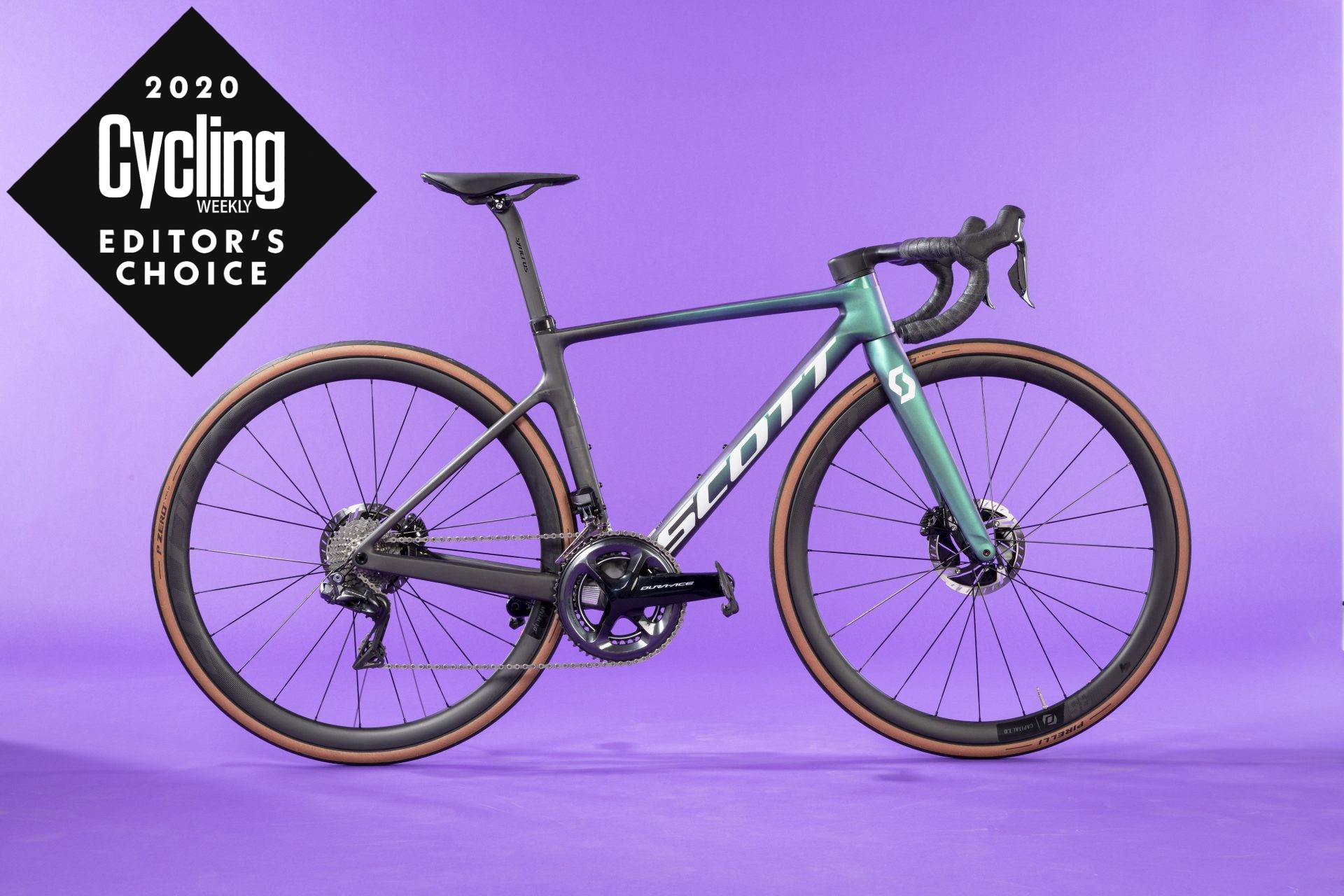
The Scott Addict RC Pro offers a stunning blend of responsiveness and compliance, it's the definition of a 'Goldilocks' bike. The geometry will please those who want to get their nose down in an aerodynamic stance (mere mortals, myself included, can hold on to a couple of spacers). Whilst this is of course a pro worthy race bike, which comes with a price tag which represents that, the value stacks up well against the competition too. The Addict does not attract the same degree of attention as some of the other bikes in its class, that needs to change - this is a bike I'd recommend to anyone seeking a swift but enjoyable ride.
-
+
Stiffness/compliance balance
-
+
Lightweight
-
+
Well designed internal cable routing system
-
-
Mech hanger (if we're really splitting hairs)
You can trust Cycling Weekly.

The Scott Addict RC Pro was selected for an Editor's Choice award in 2020. This year's list contains 78 items which scored a 9 or 10/10 with our tech team - this gear is the best of the best, and has received the Cycling Weekly stamp of approval.
The Addict is a UCI World Tour level racer, employed in 2020 by Mitchelton-SCOTT men's and women's teams. It sits in a category alongside giants such as the Specialized Tarmac SL7, Cannondale SuperSix EVO, Giant TCR and Trek Emonda. All of these bikes have had major frame updates in the last one to two years, and come loaded with aero features as well as lightweight credentials. It's a wonder they're not moving faster than light or presenting negative values on the scales.
However, being technologically advanced doesn't automatically earn a bike a 10/10. During testing, I've found some of these top draw bikes just that little bit too stiff, others just that little bit too soft. Ride quality is a question of personal preference, but I have sat aboard a lot of this year's very best road bikes, and Scott's creation hits the nail right on the head for me. Less than an hour into my first ride aboard the Addict RC Pro I had already nicknamed it the 'Goldilocks bike'.
The model on test is the RC Pro, it sits one step down from the RC Ultimate, which uses SL (super light) carbon and comes with a power meter fitted as standard as well as Zipp wheels and Schwalbe Pro One tyres.
The frame
The Scott Addict RC was last redesigned in its 2020 guise (released in 2019). It impressed the Cycling Weekly tech team then, and it continues to do so - which is unsurprising really since the frame hasn't changed.
In this most recent iteration, Scott applied its airfoil design to the downtube, headtube, seattube, seat post and seatstays - with the goal of reducing overall drag.
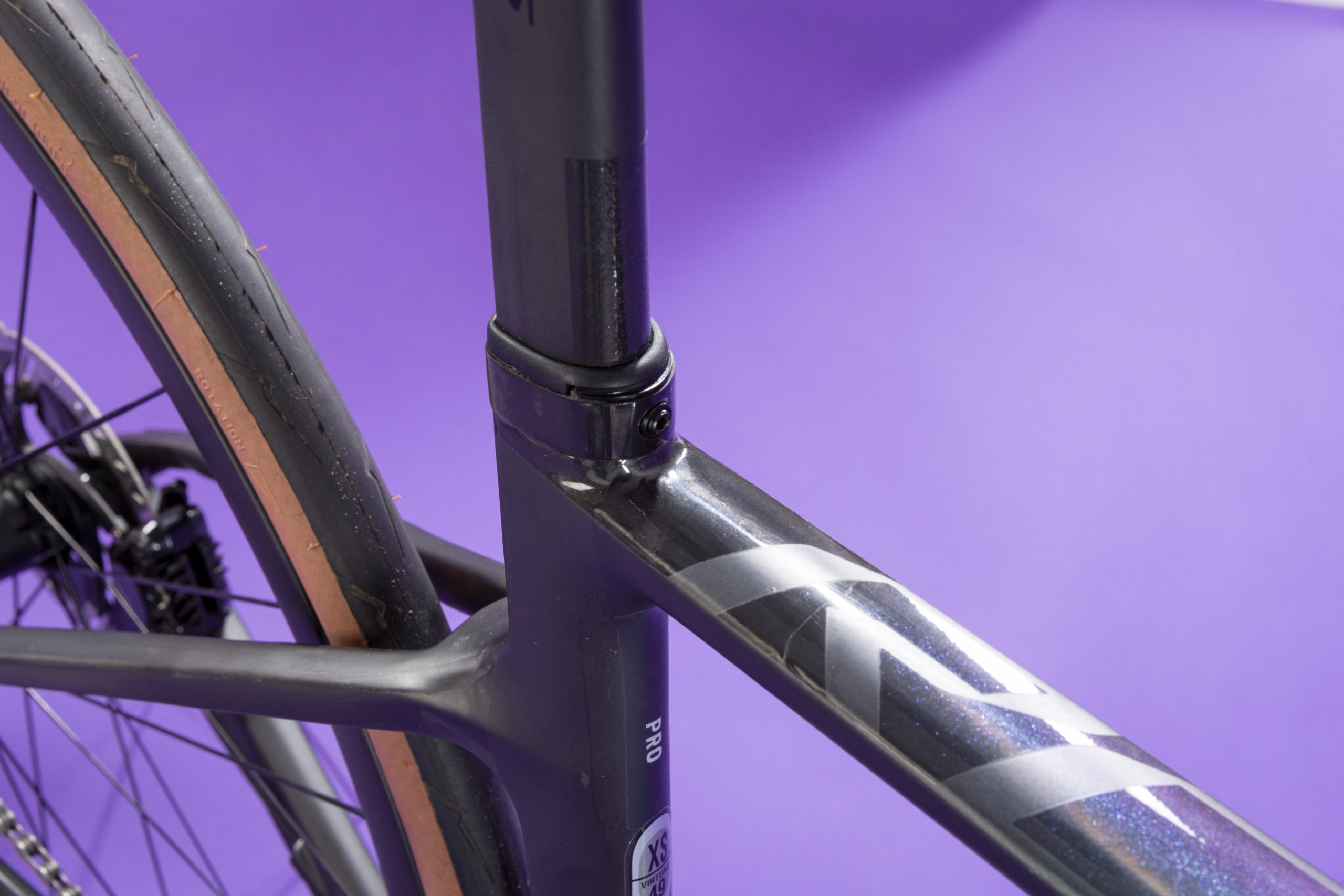
The aero shapes are evident. However, I'd suggest that Scott is still tending more towards a traditionally light and responsive design for the Addict over going "full aero" to the point of stepping on the toes of its brother, the Foil. That could because it's a year behind in development when compared with machines that were overhauled for 2021 - but I'd encourage Scott not to step too far away from its current stance in future unveilings.
Scott's claimed 'hollow structure' could go some way to explaining the Addict's lively, lightweight ride - the brand says that the construction method means the frameset has a completely clean inside aesthetic. Without actually cutting our test rig open (which wouldn't make me popular, especially since this bike is due to be the PR manager's personal bike once I'm finished testing it), this is tricky to confirm but with my size XS weighing in at 6.67kg there clearly aren't many wasted grams clinging to the chassis.
More weight has been saved via a seatpost clamp design that allows for a lighter carbon post, the clamp itself was easy to get to - though it did require holding a torque wrench at a very slightly odd angle.
Scott has also made a huge effort to up its ante on the integration. The brake calipers are hidden by aero covers - which can easily be removed for maintenance. I did notice these rattled very slightly as I wheeled the bike down the steps from my house on the first ride, but I never heard a peep out of them on the road.
The front end is characterised by the distinctive looking Combo Creston IC handlebar. This waves its way to a set-back centre, its practical job being to make integration smoother as the cables (mechanical or electric) route from the hoods, into the bars, through the stem and disappear into the head tube. It also offers a reported aero gain. In the grand scheme of 'internal cable routing' this is neat and easy to work with, as confirmed by mechanics at several local bike shops, who work on such systems day in, day out.
The bars themselves have a unique aesthetic, provide a comfortable flat surface to place your hands when climbing, and also offer up a high level of compliance.
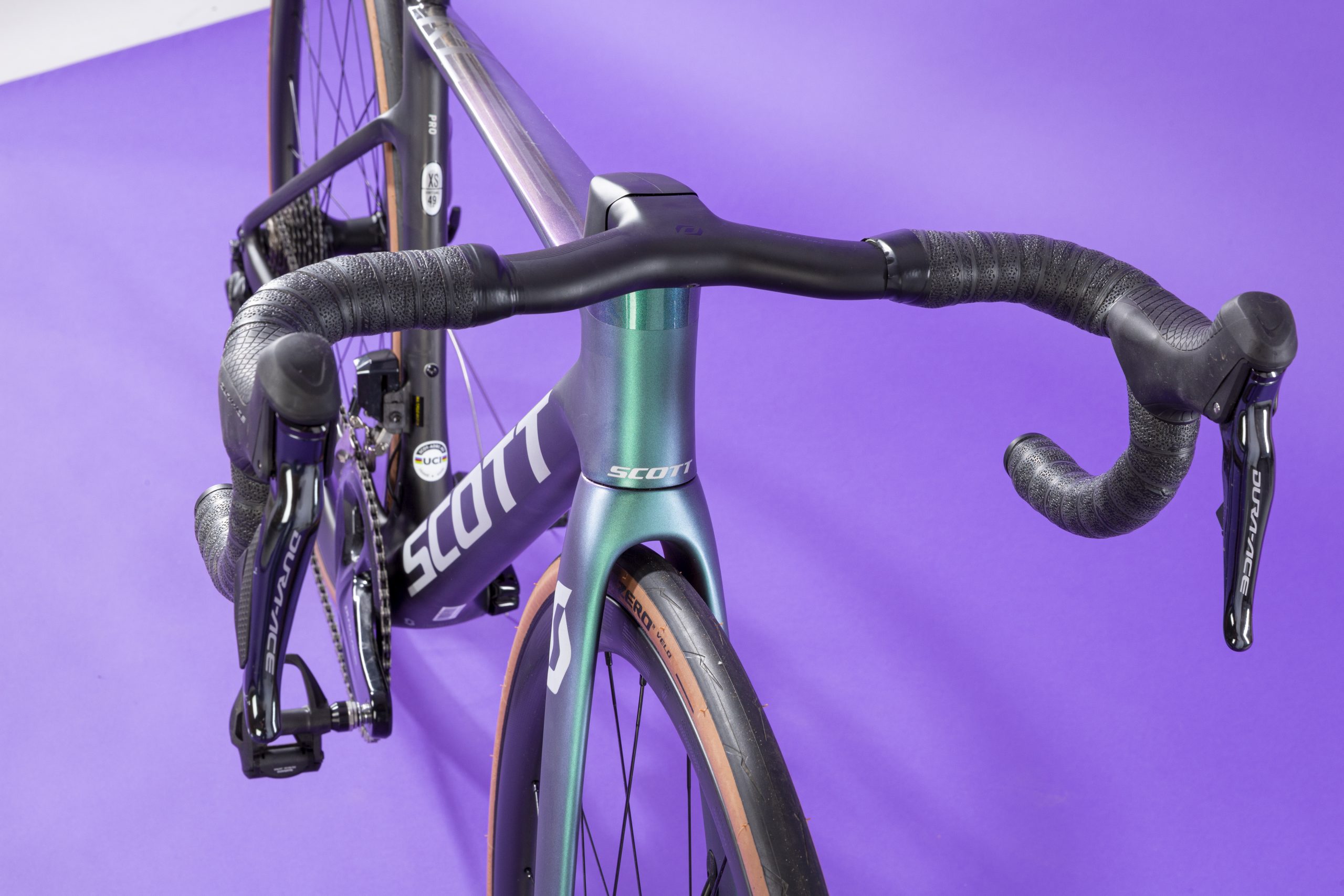
I did take issue with them on two counts, however. Firstly, you'll need a compatible computer mount as the stem is far too wide to use a generic round mount and elastic bands. Secondly, the v-shaped centre meant when looking down from the hoods I could always see the hub whirring away. The age-old adage is that if a rider can see the hub in front of the bars, the bike is too small, and if the hub is protruding behind the bars it's too big. This is a rule of thumb that's open to a plethora of errors - but I still found it really distracting. I'm sure this would pass with familiarity.
The bike arrived slammed, but if you're experimenting with bar height ahead of making the chop, you'll need to use a round top cap.
Geometrywise, the Addict is pretty aggressive when compared with other bikes in its class.
| Bike | Stack (mm) | Reach (mm) |
| Cannondale SuperSix Evo (51) | 534 | 378 |
| Specialized Tarmac SL7 (52) | 517* | 383 |
| Trek Emonda SLR disc (52) | 533 | 383 |
| Scott Addict (XS) | 511 | 388 |
*Includes 10mm immovable spacer, so consider this 527mm
With the steerer cut, the front end was more than low enough for me. I notice that even former World Champion Annemiek van Vleuten rides her XXS with an 80mm stem and a full complement of spacers (I even trawled Getty to make sure that's how she races it). I'd suggest if you're looking for a wind cheating position, you'll find it here, and if I'm honest it took a bit of getting used to for me.
Scott has opted for a relatively long wheelbase - at 994mm in a size XS (creeping up to 1023mm in the largest size). However, the 71º head angle is pretty steep - in this respect, it's similar to the Cannondale SuperSix EVO.
If I were to make a minor criticism, it would be that the handling is quick and fitting for a race bike, but perhaps a little less so than others in its class. I'm not a bike designer - I just quibble with the product - but I reckon a slightly shorter chainstay (these are the same across all sizes, at 410mm) and thus shorter wheelbase might have made for a slightly whippier back end.
The spec
The Scott Addict RC Pro is the top of the line model, coming specced with Shimano Dura Ace Di2 groupset, with 160mm disc brake rotors front and rear. Gearing is a 52-36 with an 11-30 at the back which is more than enough for a racer (I'd rather an 11-28, to be honest).
Most of the finishing kit comes from Scott's Syncros brand - including the lightweight d-shaped Syncros Duncan SL Aero seatpost and Syncros Capital 1.0 35 Disc wheels. I'm absolutely convinced that the seatpost adds to the compliance of the ride, and the tubeless ready wheels feel pretty much on par with the performance of the overall package.
The saddle is Scott's Syncros Belcarra Regular 1.0 - personally, I was not a fan of this, but being a touchpoint I'd nearly always swap I won't dwell on it. The brand has finished the package off with Pirelli PZero tyres, in 28mm - I'm a long term advocate for Pirelli's race ready tyre - enjoying the blend of grip, comfort and puncture protection on offer here. I took the Addict RC Pro for an autumnal spin over Dorking's Coldharbour and Holmbury Hill, noodling up and over wet and leaf-strewn roads without a flat.
The rear mech hanger design has to be noted. Scott specs a hanger which cuts a strange, hollow sort of shape. The job of a mech hanger is of course to break in order to protect the derailleur - and I will add that I had no issues with it becoming bent or damaged during testing. However, it does look rather vulnerable.
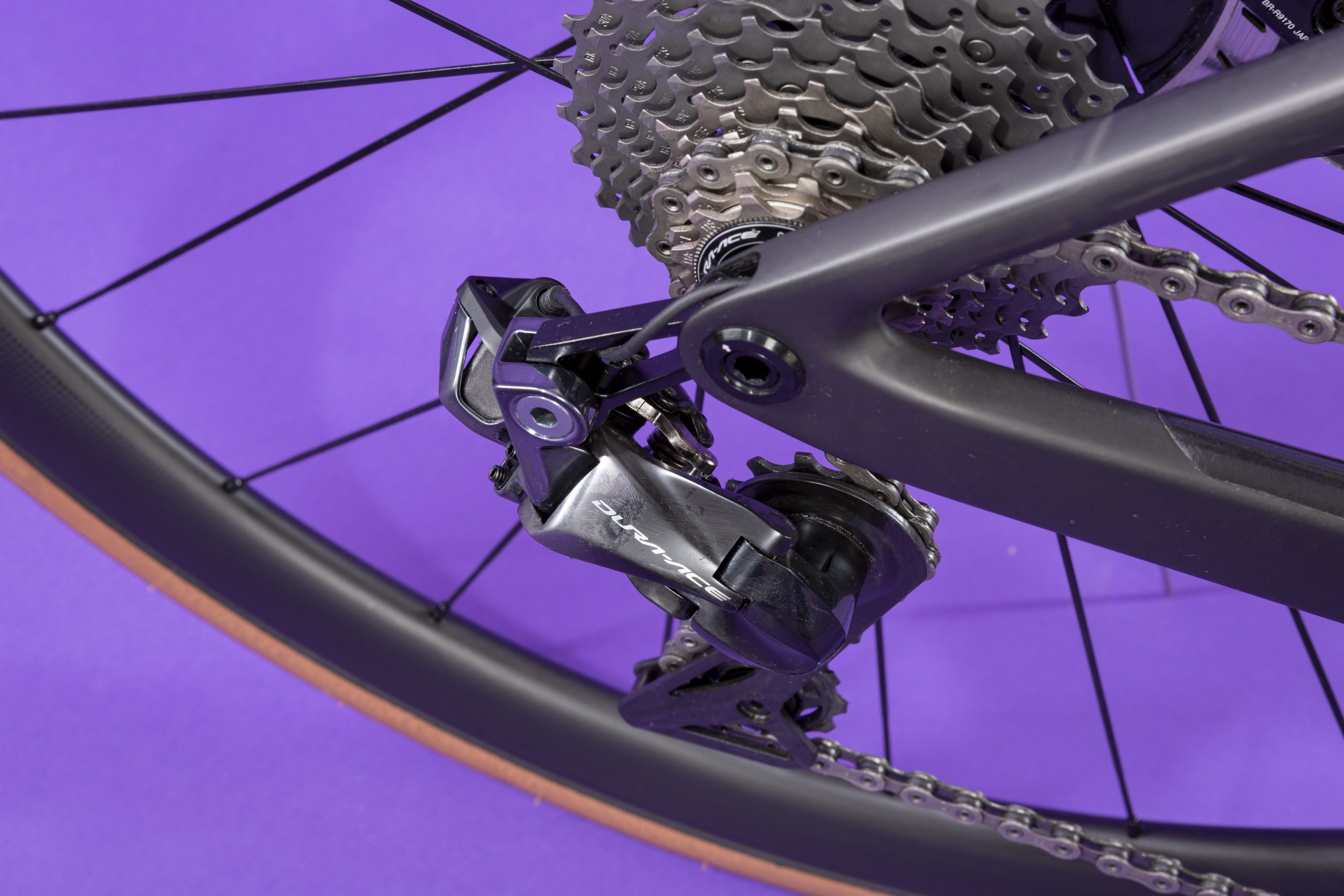
Whilst many brands now spec a power meter as standard on the top of the line builds, Scott has declined to do so. However, this is reflected in the price - something we'll come to later.
The Addict RC Pro, like all of Scott's most highly specced machines for the year 2021, comes painted in a pearlescent green/blue hue. This is extremely beautiful to behold, however, two small scratches on the top tube suggest that it may not be as resilient as a simple matte finish.
The ride
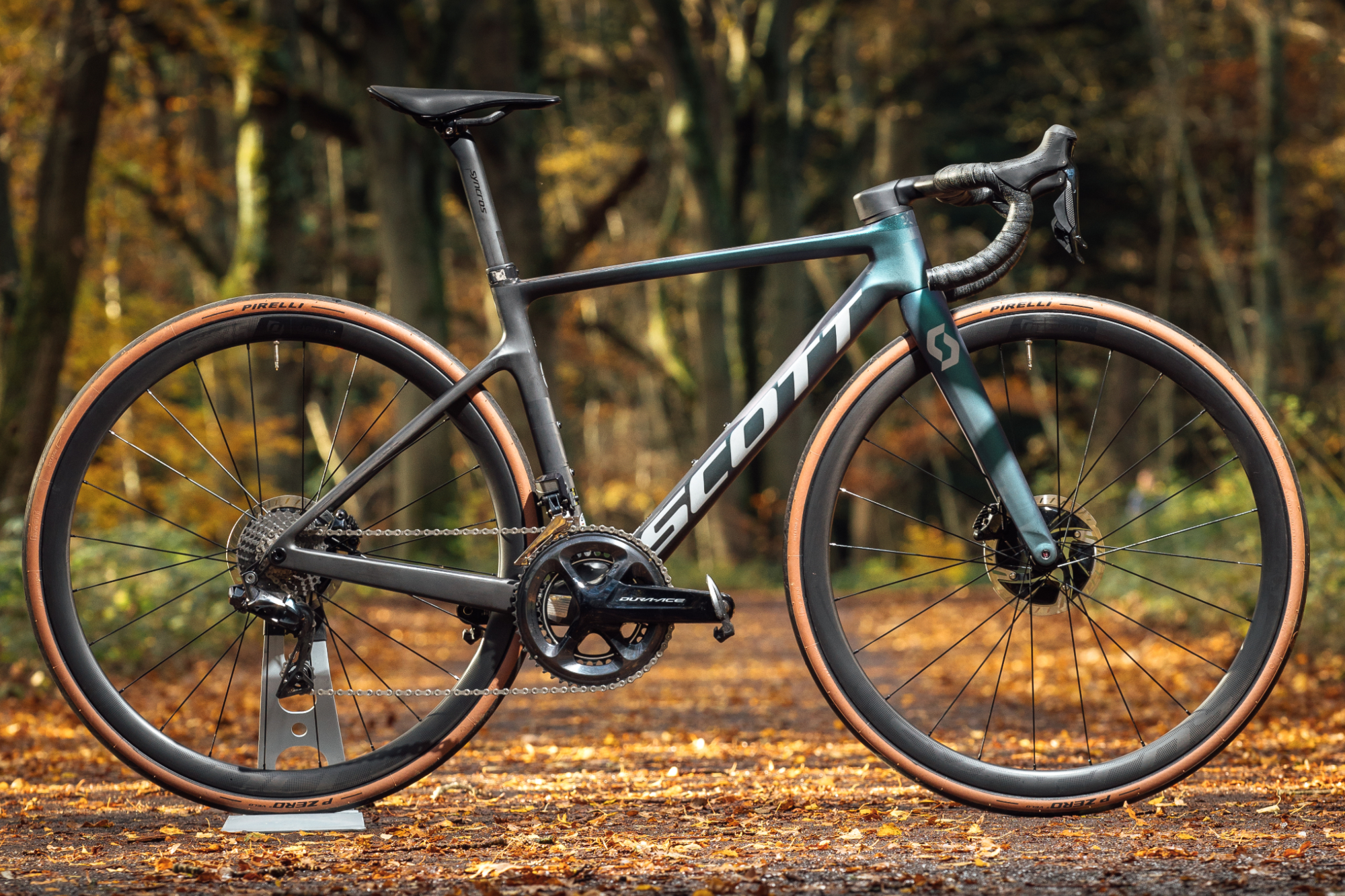
A basic assessment of Google search volume will tell you that the Scott Addict is not surrounded by the same level of interest as the biggest hitters in the road race market (read: Tarmac SL7, TCR, Emonda).
However, if it receives less attention that's not for want of performance - my biggest takeaway from testing this mermaid colour Addict was that it's been meanly overlooked in the popularity stakes.
The Addict's greatest asset is the way it beautifully balances power transfer with comfort. Getting out the saddle, this is a bike that responds with eagerness. However, a combination of tube shapes, handlebar and seatpost design - as well as the simple addition of 28mm tyres - still make for a plush and enjoyable ride. Bumps in the road are transmitted - but not amplified.
Whilst the handling wasn't my favourite, my criticism here is really splitting hairs - the Addict RC Pro rides like a race bike and arguably having that slightly slower turning circle could easily be read as stability, depending who you ask.
Value
The Addict RC Pro comes in at £7699 - dressed in Dura Ace Di2 with ready to race carbon wheels. Whilst this is a rather massive outlay, it's cheaper than similarly specced bikes elsewhere - which are often now pushing five figures. Scott does offer a bike to rival these (the Scott Addict RC Ultimate) but the RC Pro doesn't feel like a step-down. Even taking into account the fact that many £10k machines arrive with a power meter fitted, the Scott Addict RC Pro still comes in representing better value as you can now pick up a watt-o-meter for less than £1k. The only high profile example where the Addict loses out is to Canyon's Ultimate Evo (£7499 at time of review, with a SRAM Red eTap and a power meter) - but then we know better than to compare traditionally distributed bikes with direct only brands.
How do we score products? Check out the scale here

Thank you for reading 20 articles this month* Join now for unlimited access
Enjoy your first month for just £1 / $1 / €1
*Read 5 free articles per month without a subscription

Join now for unlimited access
Try first month for just £1 / $1 / €1
Get The Leadout Newsletter
The latest race content, interviews, features, reviews and expert buying guides, direct to your inbox!
Michelle Arthurs-Brennan the Editor of Cycling Weekly website. An NCTJ qualified traditional journalist by trade, Michelle began her career working for local newspapers. She's worked within the cycling industry since 2012, and joined the Cycling Weekly team in 2017, having previously been Editor at Total Women's Cycling. Prior to welcoming her first daughter in 2022, Michelle raced on the road, track, and in time trials, and still rides as much as she can - albeit a fair proportion indoors, for now.
Michelle is on maternity leave from April 2025 until spring 2026.
-
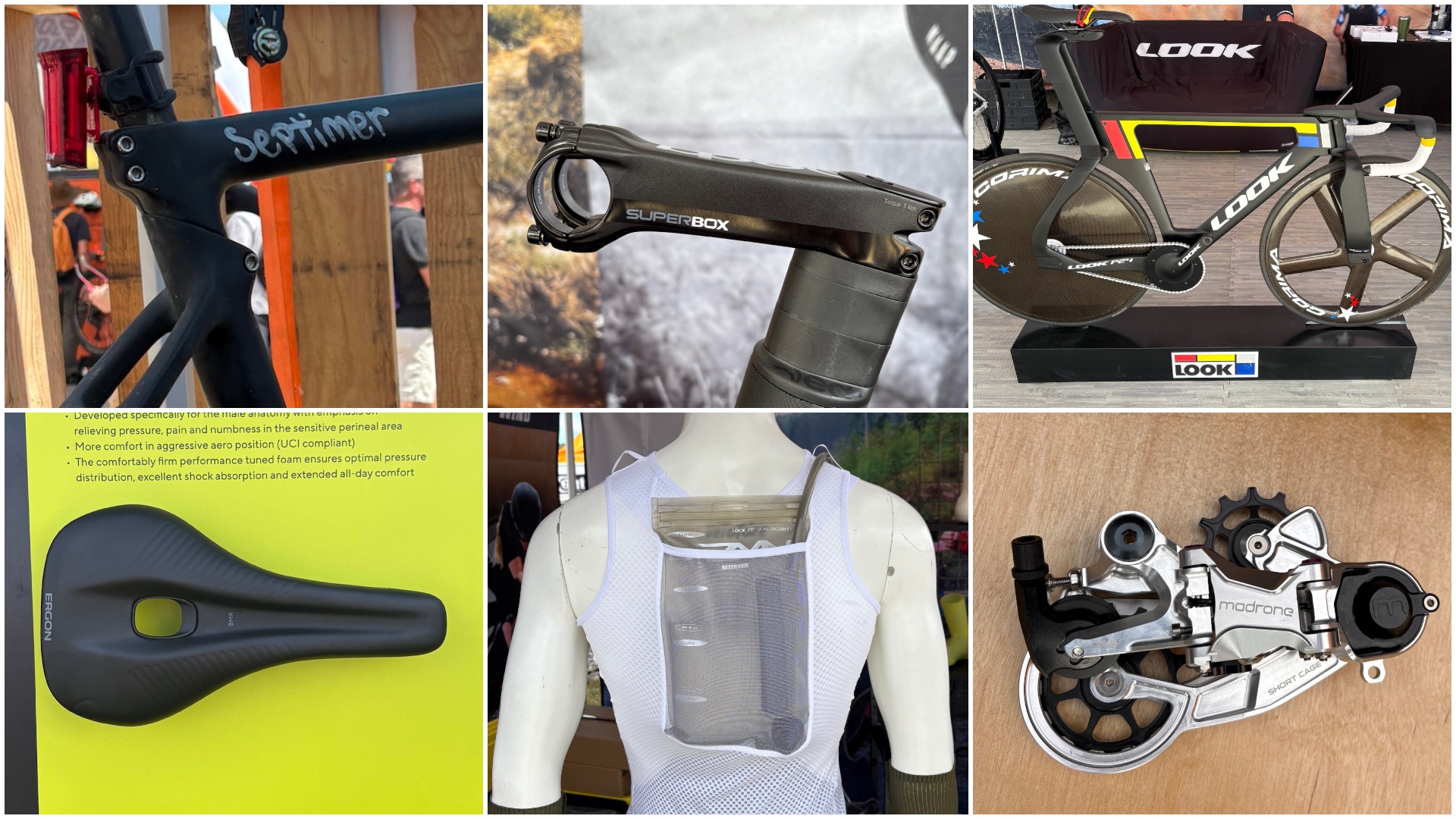 The Sea Otter Classic: sights and sounds from the biggest bike gathering in North America - Part 1
The Sea Otter Classic: sights and sounds from the biggest bike gathering in North America - Part 1Odds and ends that run the gamut, from a $13,000 frameset to armoured kit and new hydro-vests
By Tyler Boucher Published
-
 The thing that bothers me most when I look back at old school training is that right now we’re doing something equivalently misguided
The thing that bothers me most when I look back at old school training is that right now we’re doing something equivalently misguidedOur columnist's old training diaries reveal old-school levels of lunacy
By Michael Hutchinson Published
-
 'This race is absolutely disgusting': Peloton reacts to another brutal Paris-Roubaix Femmes
'This race is absolutely disgusting': Peloton reacts to another brutal Paris-Roubaix FemmesNow in its fifth edition, Paris-Roubaix Femmes is still a tough race, even for the best bike riders in the world
By Adam Becket Published